This post may contain affiliate links. Please see our disclosure policy.
German Christmas Cookies are a special heirloom in many households around the holidays, and many of us grew up eating these special treats. This festive holiday cookie list takes you through more than 20 of Germany’s most popular Christmas cookies from A to Z (with recipes)!
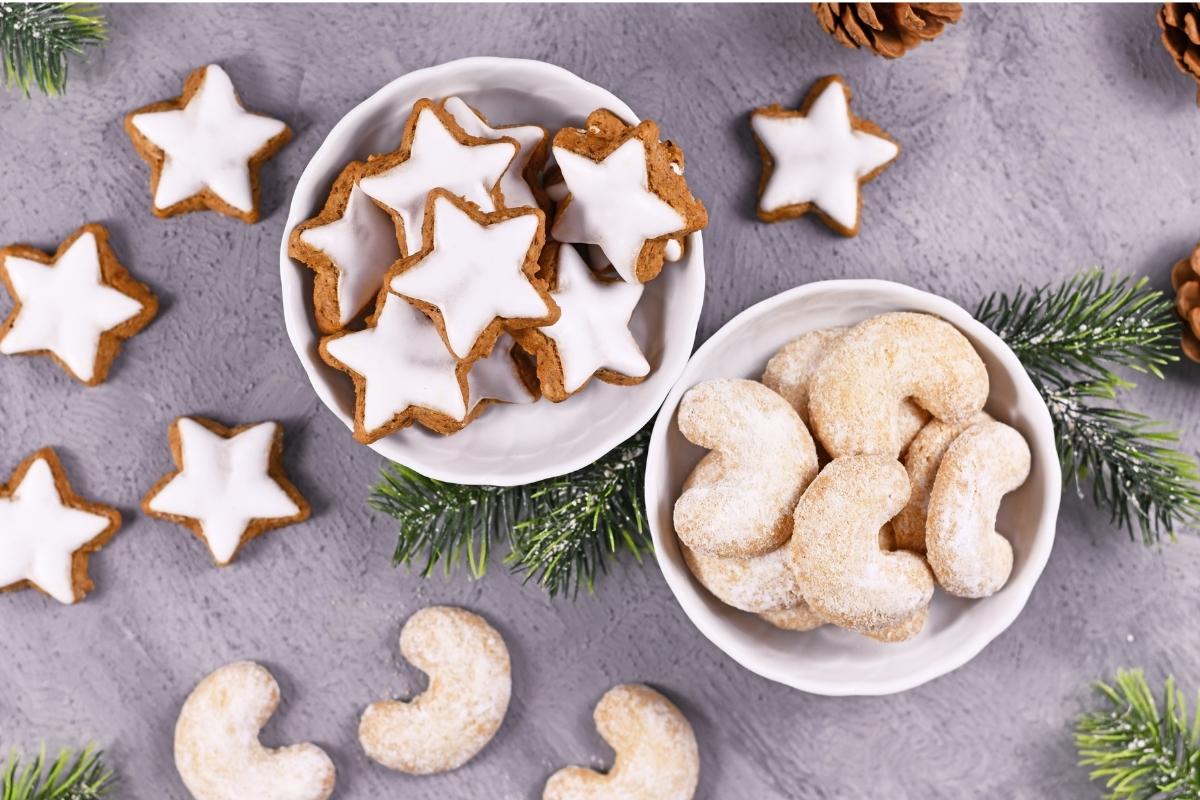
Aachener Printen
Aachener Printen are a type of intensely spiced gingerbread that come from the town of Aachen, where they have DOP status (Protected Designation of Origin — just like champagne!).
In Germany, Aachener Printen is sweetened with an ingredient called Zuckerrübensirup, a much-more-easily-found syrup made from sugar beets. If you want to buy Zuckerrübensirup in the United States, you’ll probably have to order it online, but you can achieve passably similar results using golden syrup, which you can find in specialty grocery stores or online.
Aachener Printen get their signature depth of flavor from Lebkuchengewurz, a gingerbread spice mix made from a blend of warming spices including cinnamon, allspice, cloves, star anise, ginger, and cardamom.
To make sure the finished gingerbread has its signature airy, honeycomb-like inner texture, non-German bakers will want to use a combination of baker’s ammonia and baking soda in place of the traditional potash and baker’s ammonia.
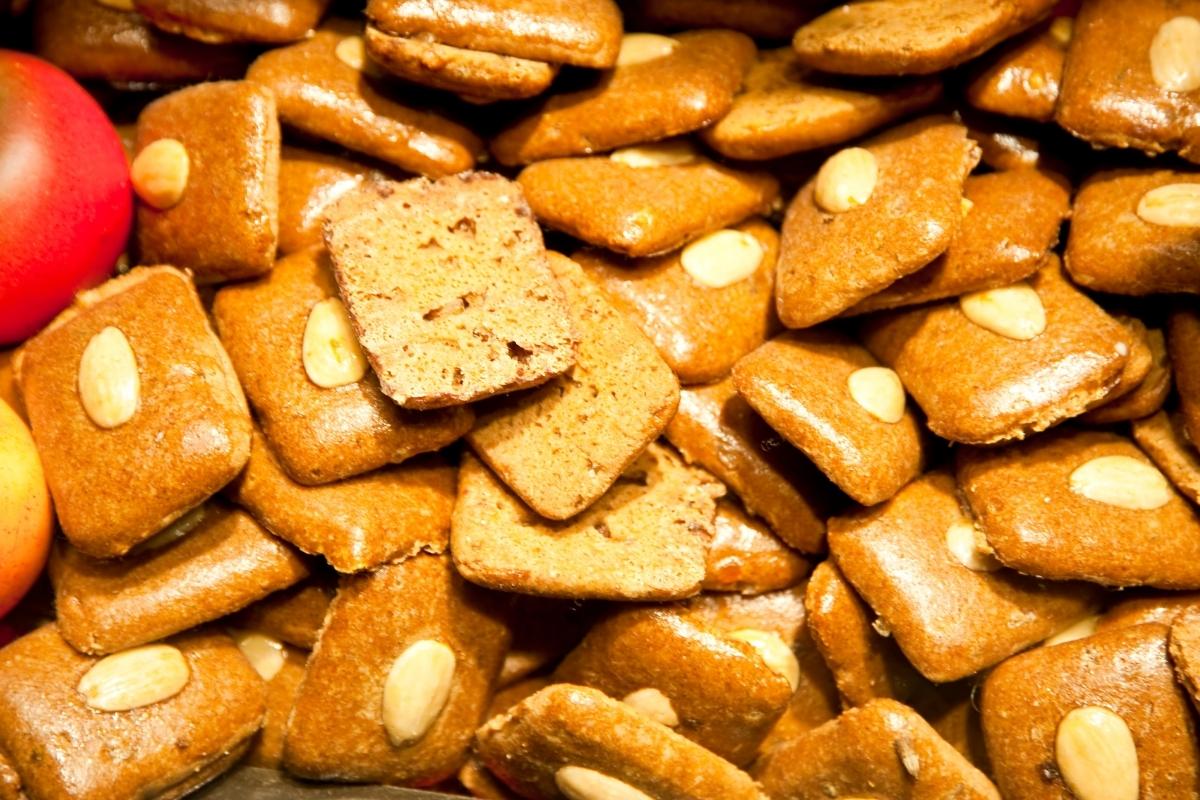
Anisplätzchen
These beautiful little anise-flavored drop cookies get their two-tiered appearance from the inclusion of egg whites, which are whipped to create a crisp and lightly chewy texture.
As with other meringue-like desserts, making Anisplätzchen requires a little bit of elbow grease (although a hand mixer or stand-up mixer will help with this) but once the batter has come together the actual assembly is fairly straightforward.
For the truest licorice flavor, grind whole aniseed before adding it to the other ingredients. After all, if you’re someone who loves licorice, why not elevate the flavor as much as possible?
Ausstecherle
The word Ausstecherle literally translates to “little cut outs” in English, the perfect name and meaning for what are otherwise known as “German butter cookies” in North America and beyond.
Ausstecherle are pure Christmas nostalgia, and I love making them with my kids using our ever-growing collection of cookie cutters.
When it comes time to decorate the cookies, the sky’s the limit. Icing, sprinkles, and small candies work well, and there’s always the option to eat a cookie (or three) straight from the oven.
You can use the simple glaze outlined in the recipe above, or go all out and make royal icing in a variety of bright, festive colors.
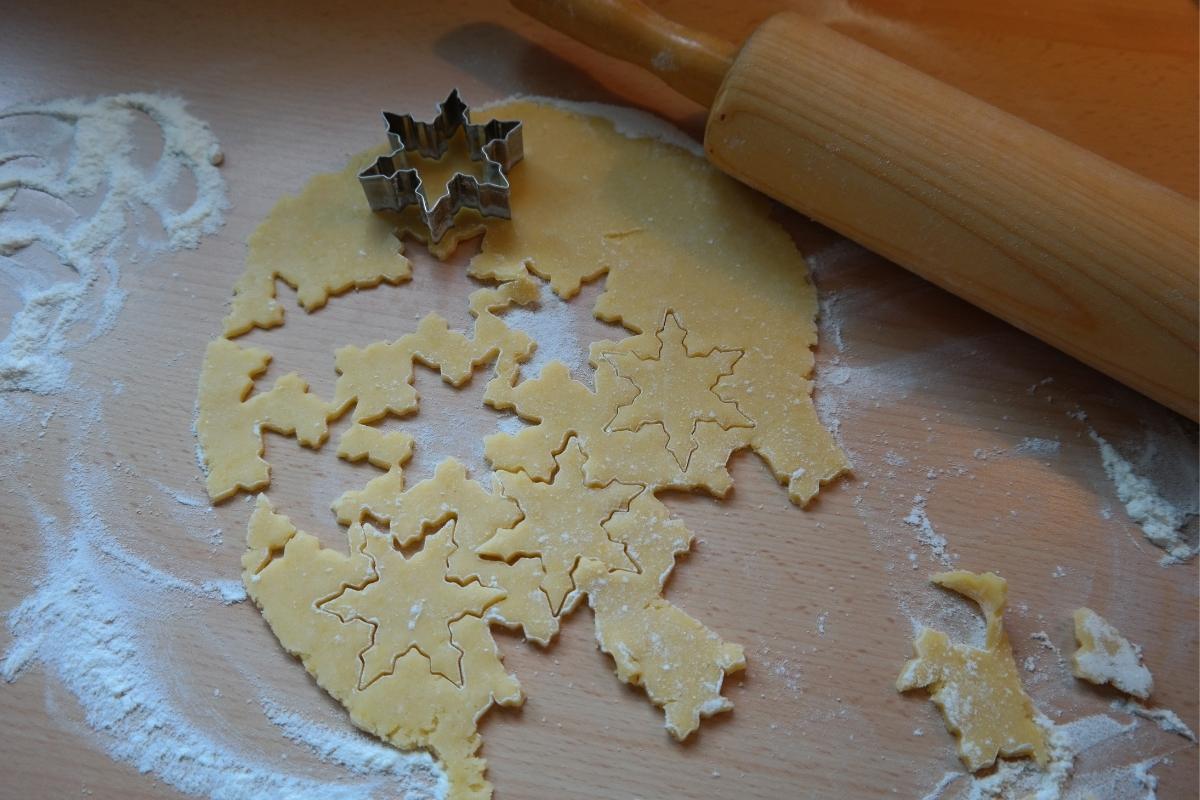
Basler Leckerli
Although Basler Leckerli are technically a Swiss treat, they have a place in German Christmas tradition, so I’m including them on this list.
Basler Leckerli translates to “little delicious things from Basel,” and that is exactly what these pleasantly chewy bars are.
Packed with familiar and warming ingredients such as candied citrus, almonds, cinnamon, cloves, and nutmeg, the cooked mixture is topped with a sugary glaze while still hot from the oven before being cut into bar-sized portions.
Basler Leckerli only gets better if it’s allowed to cure, so I like to make this recipe a couple of weeks before Christmas. They make an ideal gift, too, if wrapped in some festive paper and placed in a box with some ribbon — give them to friends and family nearby, or mail them out to loved ones who are far away.
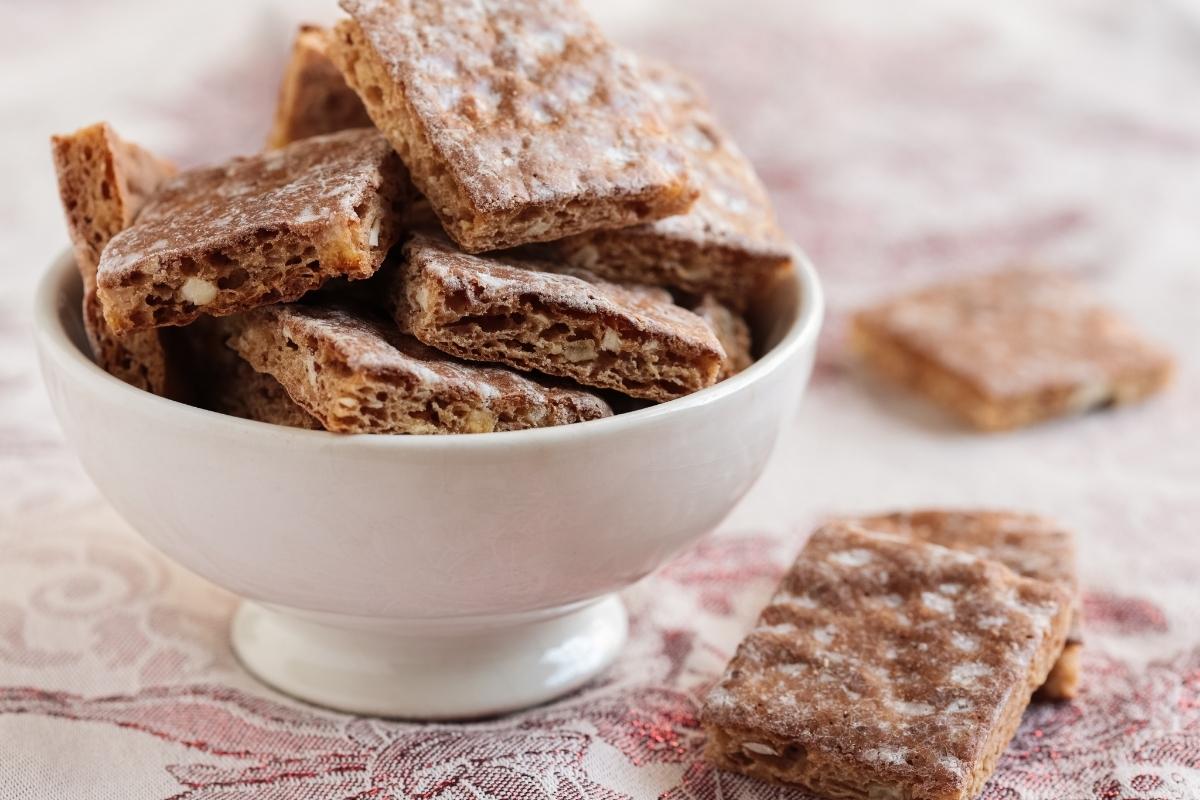
Bethmannchen
If you’re a member of Team Marzipan, you’ll fall in love with Bethmannchen, Germany’s most beloved Christmas treat.
In case you can’t make it to Frankfurt around the holiday season, where they’re sold at the annual Christmas Market, you can make them at home using this recipe for homemade marzipan (store bought is also perfectly fine, it just tends to be expensive).
These pastries are adorned with four almonds, which, according to legend, represent the sons of Simon Moritz von Bethmann, the city councilor and banker who the dessert was first commissioned for.
My favorite way to serve Bethmannchen is to pile them on a tiered cake stand with another type of cookie or bar, surrounded by extra nuts and dried fruit. I like to keep the nuts still in their shells with a nutcracker nearby, and a pot of freshly brewed tea handy for guests who are in need of even more winter-y comfort.
Engelsaugen
The name Engelsaugen means “angel’s eyes” in German, an oddly descriptive moniker for these pretty little thumbprint cookies.
Engelsaugen are also sometimes called Husarenkrapferl, an equally illustrative and befuddling name that translates to husaren’s donuts, with “husaren” referring to the branch of service of a light cavalry.
I can tell you that if a cavalry wanted to travel with these sweets, the jam would have to be on the inside and not on the outside like these cookies, so I’m guessing this is a simplified recipe turned into a cookie.
Whichever name you choose to call these cookies, they can be filled with jams or jellies (redcurrant jelly is traditional), almond butter, or your favorite chocolate-hazelnut spread.
Although unconventional, a generous glug of Amaretto or spiced rum isn’t an unwelcome addition to the cookie dough. You can also experiment with desiccated coconut, ground almonds or hazelnuts, all of which add a satisfying chewiness to the final result.
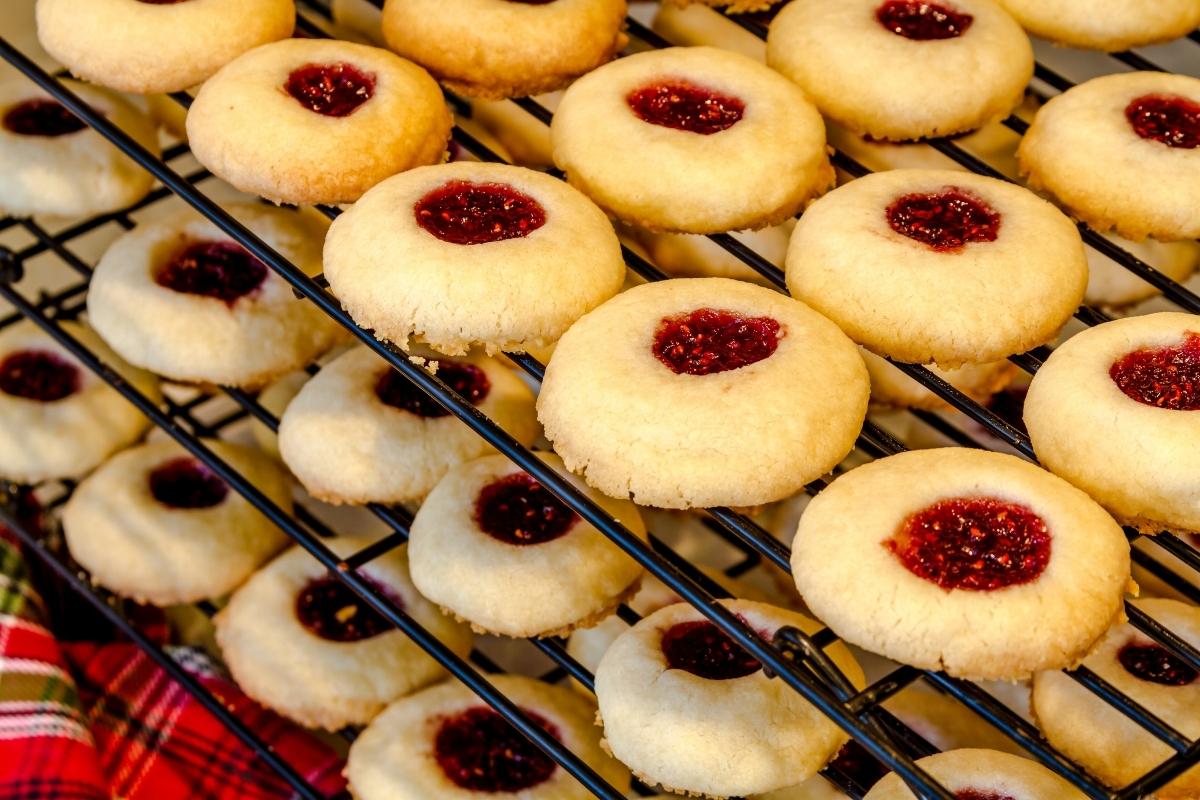
Haselnussmakronen
Haselnussmakronen are essentially hazelnut macaroons — chewy, sweet, and spiced with cinnamon.
If you’re trying to cut back on refined sugar, I’ve had great success substituting the sugar with 3 tablespoons of honey. This will give you similar, slightly-less-sweet results, and makes these cookies Paleo-friendly if that’s your jam.
And speaking of jam, there’s also a recipe that includes the option to add a teaspoon of hot raspberry jam to the Haselnussmakronen. If you’re heading in that direction already, why not experiment with a spoonful of always-welcome-no-matter-what chocolate hazelnut spread?
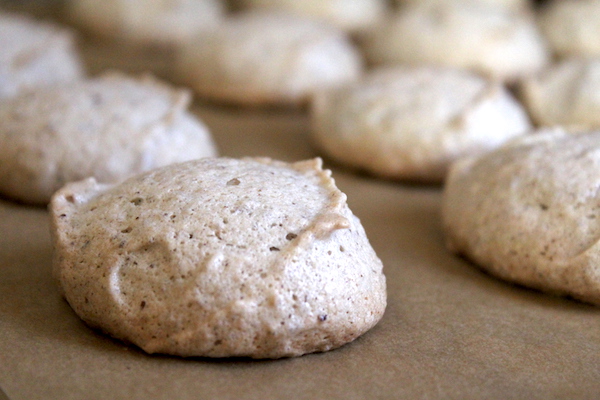
Hausfreunde
The English translation of Hausfreunde is “home friends” which, if you’ve ever enjoyed one of these cookies, makes plenty of sense.
A somewhat technical recipe to pull off, Hausfreunde are made by sandwiching two buttery cookies and a layer of almond paste together with sticky apricot jam. The sweet little stacks are then dipped in dark chocolate and topped with caramelized walnuts.
Not a fan of walnuts? This version uses caramelized cashews in place of the traditional nuts, but keeps the rest of the recipe the same.
Don’t be put off by the multiple steps involved with preparing these festive little cookies. I find that breaking each section down into small tasks helps, and that baking the cookies a day or two in advance makes the process stress-free and a lot more fun — especially if you plan on making them with kids.
Heidesand
Christmas is definitely the season of shortbread, so it’s no surprise this classic cookie shows up in many different European cuisines.
Heidesand are a type of shortbread cookie that have been made with browned butter, a detail that transforms these cookies into a truly special and extraordinary treat. Browning the butter adds a deep nuttiness to the finished product, and is largely a passive activity.
While it’s true you could technically decorate Heidesand, it’s always tempting when baking “naked” cookies, I’d strongly suggest leaving them as-is (once you try one, you’ll understand why).
The only accompaniments these cookies need are a cup of tea (or a Hot Toddy, even better) and a good book.
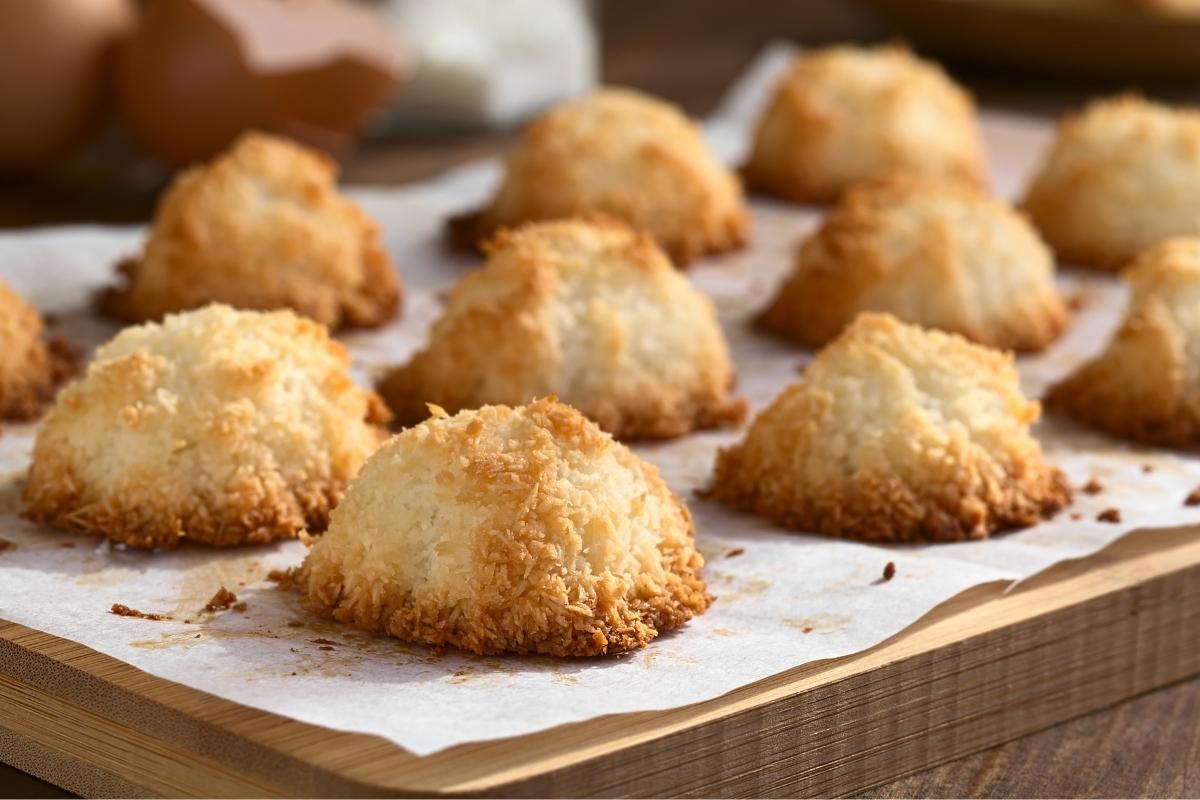
Kaiser-Plätzchen
Kaiser-Plätzchen fall into the rather large family of Linzer-like cookies, which are shortbread cookies that have been filled with jam or marmalade.
In this group you’ll find star-shaped Kaiser-Plätzchen (“emperor’s cookies”), Spitzbuben (Swiss cookies that translate to “little rogues/rascals”), Hildabrötchen (filled with currant jam), and many more delicious varieties that differ only slightly based on their shape and filling. I’ve even discovered a chocolate version of Spitzbuben, a new must-try on my list of Christmas cookies to attempt at home.
The best trick for making jam-filled cookies? Remove the seeds from the jam before adding it to the cookies, it’s a bit fussy but basically only requires warm jam being pushed through a fine mesh sieve. Whenever I made jam cookies I like to use my own homemade jam recipes, but any good quality jam will work well.
Kokosmakronen
Another macaroon recipe, this one sticking to the classic combination of shredded coconut and (optional) melted chocolate.
Kokosmakronen (which is a delightful word to say out loud, pronunciation be damned), can be made in all manner of shapes and sizes and, depending on your tastes, are often dipped or drizzled in melted chocolate.
The trick to successful macaroons is to keep the oven heat low and to let the baked macaroons cool completely before eating — difficult, I know, but worth it. The reason this last part is so important is that it’s the step that all but guarantees a perfectly chewy cookie, and who wouldn’t want that?

Lebkuchen
Rather than being a specific type of baked good, Lebkuchen is the name of an entire family of ginger- or honey-spiced cookies which are typically glazed or coated with dark chocolate or icing.
Some of the more well-known varieties include:
- Lebkuchenherzen: heart-shaped cookies with decorations and inscriptions made from icing; baked during Oktoberfest and the Christmas season (you can find a list of popular German sayings for icing ideas at the link).
- Honigkuchenpferd: horse-shaped honey cakes that are decorated with sugar icing; this video is in German but will give you an idea of ingredients and the method.
- Hexenhaus: translates to a “witch’s house” (think the edible house in Hansel and Gretel) and is the name of a German gingerbread house.
- Nürnberger Elisenlebkuchen: a region-specific version of Lebkuchen, these flourless cookies come from the city of Nuremberg, and are made from eggs, almond paste, ground nuts, dried citrus, and Lebkuchengewürz, a spice mixture used when making Lebkuchen (recipe at link).
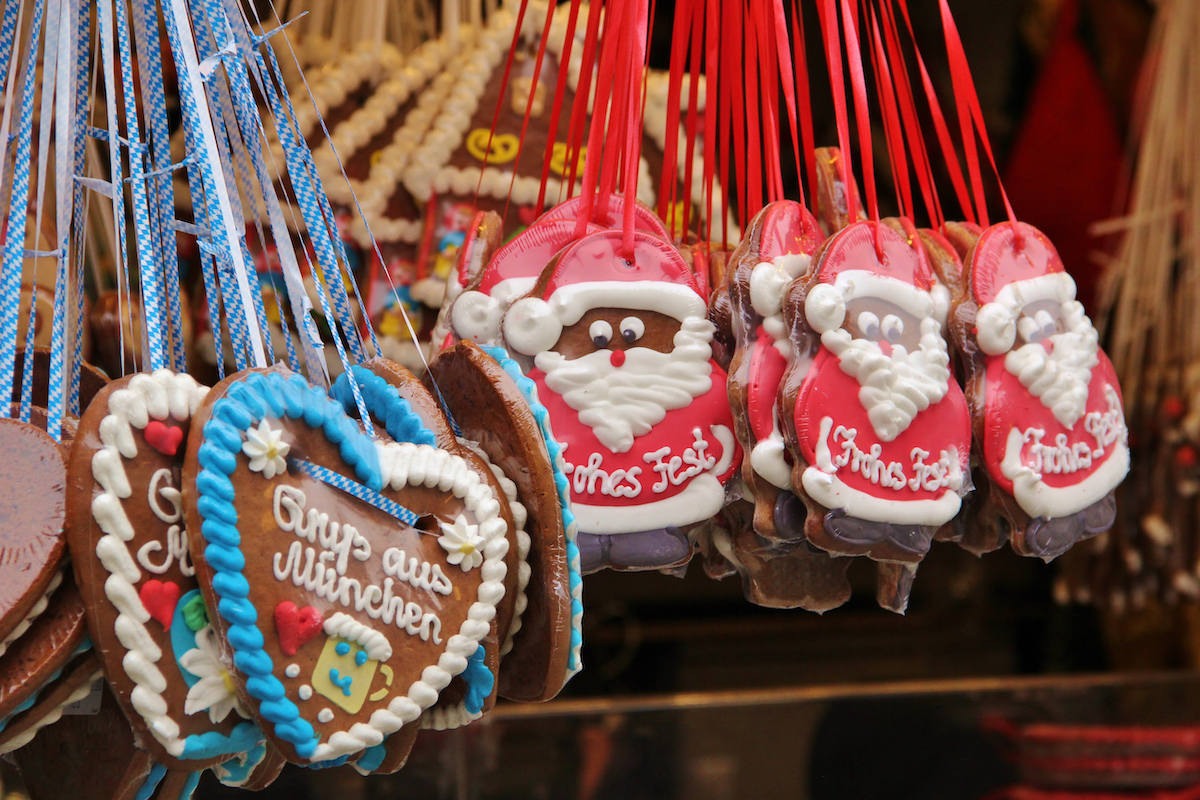
Mandelhörnchen
The name Mandelhörnchen means “little horns,” a fitting and picturesque description for these crescent-shaped, almond-covered, chocolate-dipped marzipan cookies.
The marzipan used in this recipe can be store bought or homemade, depending on your budget and time allowance, and you can substitute pistachios or crushed cashews for the almond flakes for variety.
The best part about this recipe? The dough for these cookies come together easily and in mere moments using a food processor. The resulting cookies are chewy and slightly crisp on the outside, almost like an festive almond macaroon.
Nikolaus honigkuchen
It’s hard to think of a Christmas treat any cuter than these Nikolaus Honigkuchen star-shaped cookies decorated to look like little Santas. The cookie base is made from a basic roll-out gingerbread dough that includes honey and ground almonds for a chewier texture.
The recipe above shares directions for making marzipan icing, which is great for holding a certain pattern without flaking or breaking. Edible silver balls, sprinkles, and colored sugar can also be used to create a convincing Santa ensemble.
Nussecken
There’s no better treat than Nussecken if you’re a big fan of hazelnuts and shortbread! This German bar cookie translates to “nut corners,” in reference to the triangle shape of these bar cookies.
The bottom layer is made of flaky, buttery shortbread (which can be made ahead of time if you’d prefer to work in stages), followed by a layer of warm apricot jam, and finally a topping of caramelized hazelnuts.
Once the Nussecken has baked and cooled down, one corner is dipped in melted chocolate — this is definitely one cookie with many flavor and texture components.
Nussecken make a particularly elegant gift piled neatly into a festive tin, where they’ll keep for 3 to 4 weeks in a cool dry place. You can also pop them in the freezer for up to 3 months, you never know when you’ll need a Nussecken!
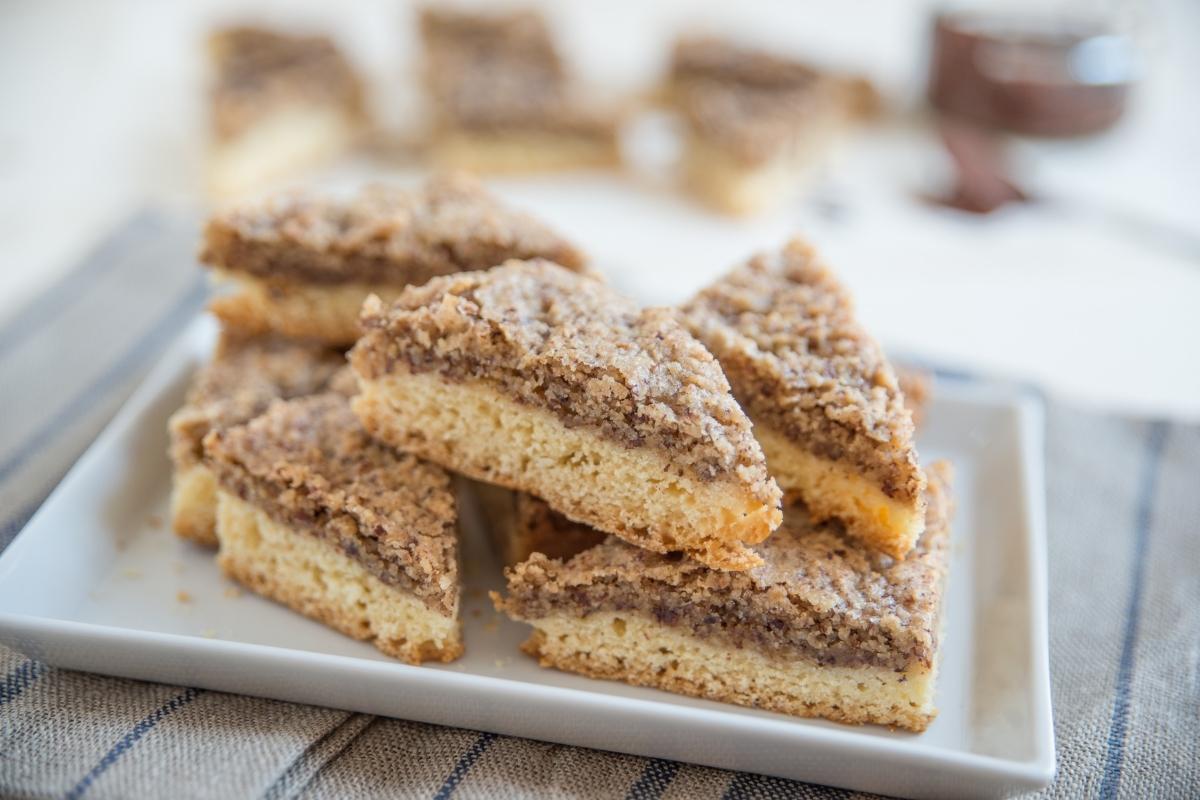
Pfeffernüsse
Considered to be one of Germany’s most beloved Christmas treats, Pfeffernüsse are round little spice cookies which are gently tossed in icing or confectioner’s sugar. Looking like miniature snowballs, Pfeffernüsse are thought to have been invented by a confectioner named Johann Fleischmann in 1753, and have been enjoyed as a holiday cookie since the 1850s.
The name translates to “pepper nut,” this is believed to be a reference to the small pinch of pepper added to the raw dough before it’s shaped and baked. In addition to pepper, the spice mix usually is made up of ground cinnamon, nutmeg, cardamom, mace, anise, ginger, and cloves.
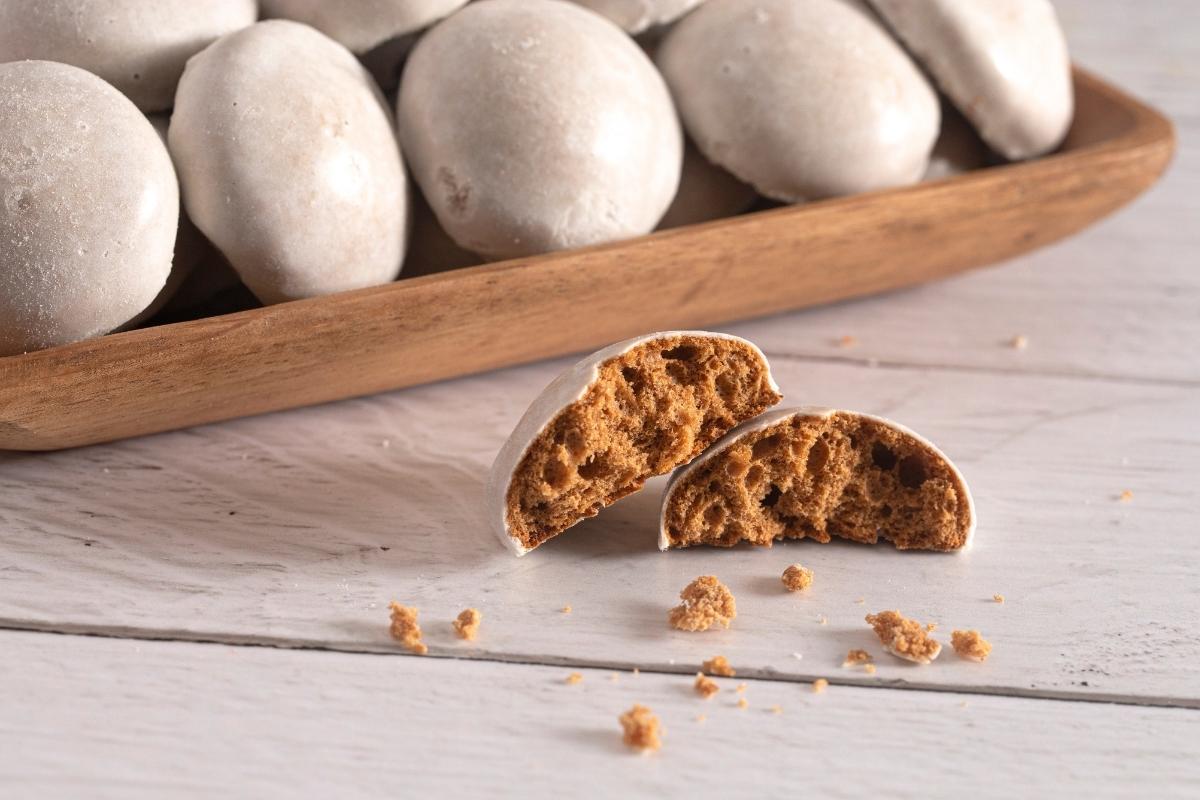
Spekulatius
Known as Spekulatius in Germany, Speculaas in the Netherlands, and commercially as Biscoff world-wide (which isn’t to stop you from making your own Biscoff-like biscuit at home when the mood strikes), these spiced cookies are traditionally prepared and eaten around St. Nicholas’ day or Christmas.
Not your run-of-the-mill gingerbread, Spekulatias are exceptionally buttery shortcrust cookies made with cinnamon, cloves, nutmeg, and cardamom. To create the shapes and images found on cookies (ie: windmills), the dough is either pressed into a mold or rolled out with a special engraved rolling pin before baking.
Spekulatius are thought to have made their first appearance back in the 1600s, when children would set their empty shoes out for Sinterklaas, in hopes of finding sweets the next morning as a reward for their good behaviour throughout the previous year.
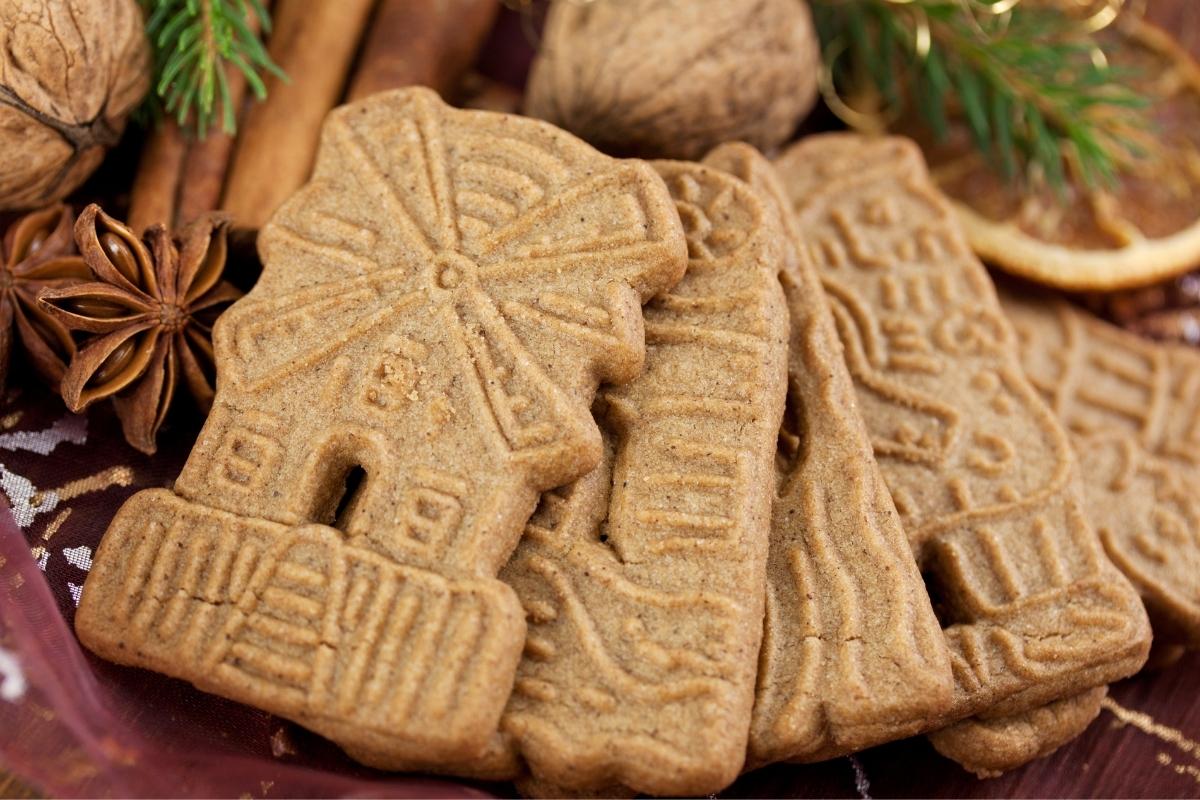
Springerle
Springerle are traditional embossed or molded holiday cookies that have been flavored with anise, with the name translating to “little jumper” or “little knight.” Food historians are divided on the name, with some believing it refers to popular molds featuring a jumping horse and others believing it has to do with how the dough “springs up” as its baking.
Springerle, which originated in the southwestern town of Swabia, Germany during the 14th century, is known for its distinct molded pattern.
Unlike other molded or cut-out cookies there’s very little (if any) spread as the cookie bakes. This important detail is due to the fact that the raw dough is pressed into the mold (or rolled with a printed rolling pin) and then left to dry for up to 24 hours before it’s baked.
If made properly, springerle can be incredibly ornate since they hold their shape perfectly during baking.
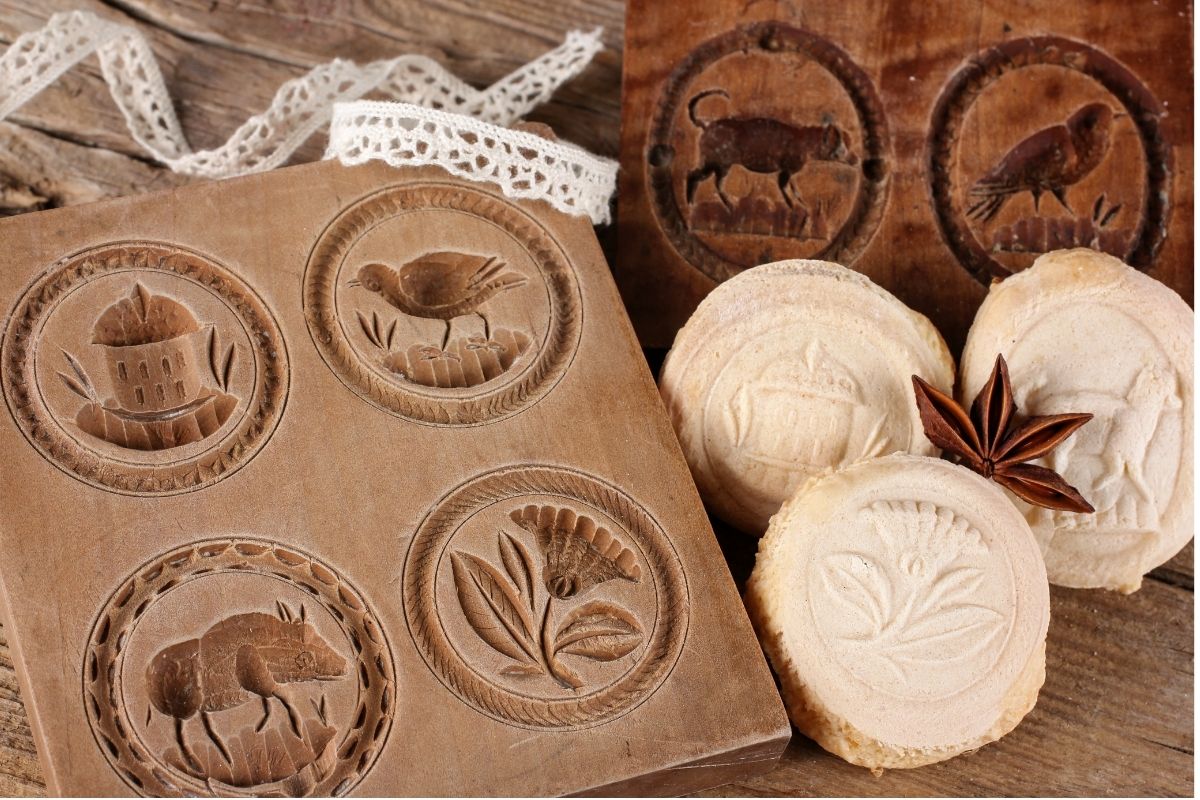
Spritzgebäck
If you’ve ever made cookies with a cookie press, there’s a good chance you’re familiar with Spritzgebäck, although you might know them simply as German spritz cookies.
The name of these wildly popular cookies comes from the word “spritzen,” a verb that means “to squirt,” a reference to the action of squirting the soft buttery cookie dough out of the press. If you don’t have a cookie press you can still make these by piping the dough with a piping bag (or you can make your own using a resealable plastic bag with the tip cut off).
Making Spritzgebäck with children is especially enjoyable. I have truly wonderful memories of preparing these cookies on cold December afternoons with my little ones, the heat from the oven warming the room and creating a very hygge-like moment in time.
These cookies are delicious as they are, but we sometimes like to decorate with sprinkles or colored sugar before baking. Another option, which is lovely for gift giving, is to dip the baked and cooled spritz in melted chocolate, garnishing each cookie with a sprinkling of candied citrus or ginger.
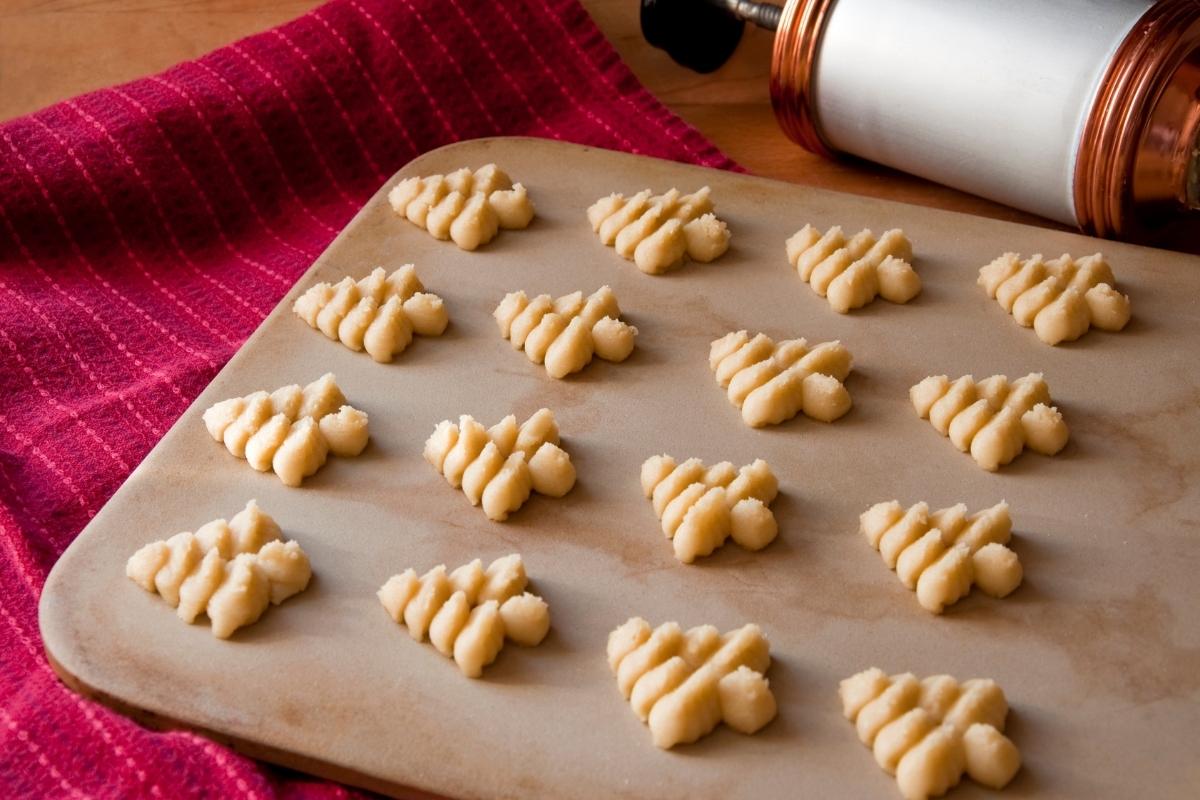
Vanillekipferl
Vanillekipferl are light and crisp cookies, shaped like a small crescent moon and dusted with vanilla sugar. A favorite at Christmas time (but also throughout the year), Vanillekipferl are made using only a few basic ingredients, including ground almonds, hazelnuts, or walnuts, and powdered sugar that’s been boosted with a small amount of vanilla sugar.
Vanillekipferl were first made in Austria, but are now loved in many European countries, including Switzerland, Poland, Croatia, Hungary, and of course, Germany.
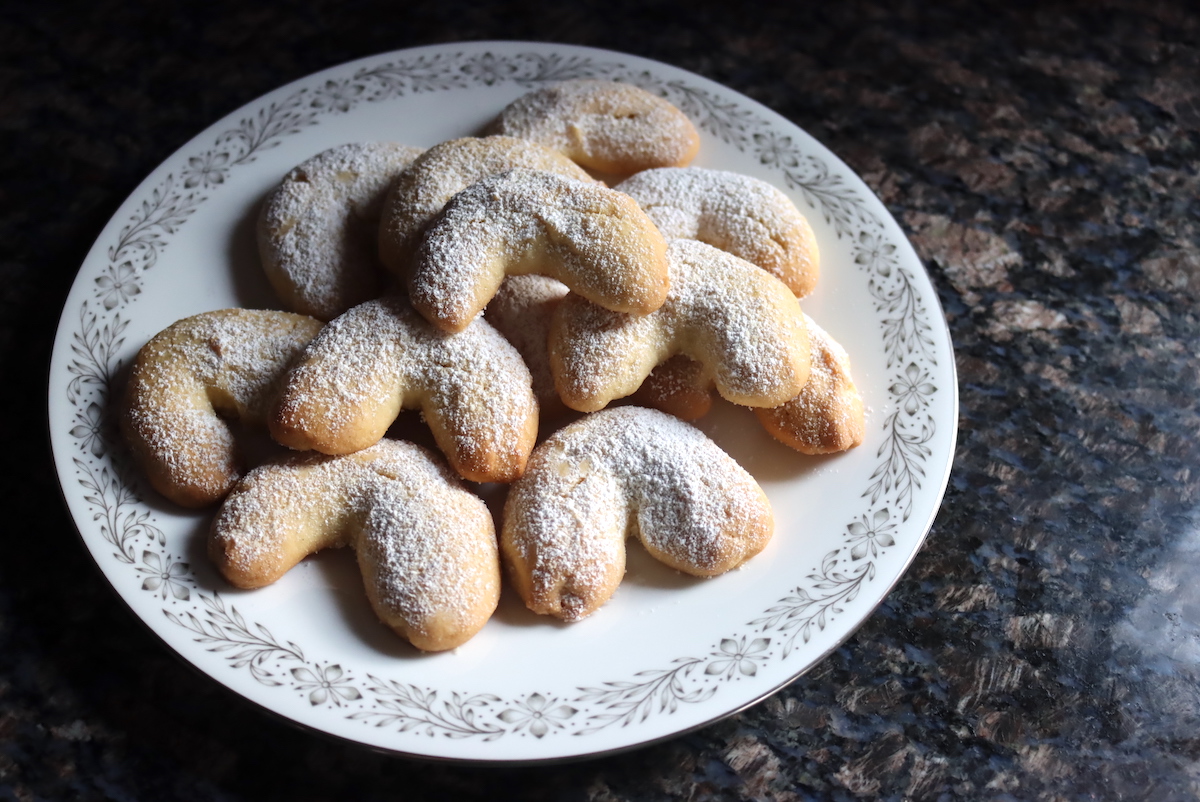
Zimtsterne
Zimtsterne, which translates to “cinnamon stars,” are spiced, then iced, cookie stars made almost entirely from nuts that originated in southern Germany. Zimtsterne are made with vanilla sugar, similar to Vanillekipferl, which you can make yourself using a vanilla bean pod, or buy online (or, if you’re lucky, a German import store).
Like many nut-based baked goods, Zimtsterne are gluten-free. You can store these cookies in an air-tight tin for 2 to 3 weeks, if they somehow last that long!
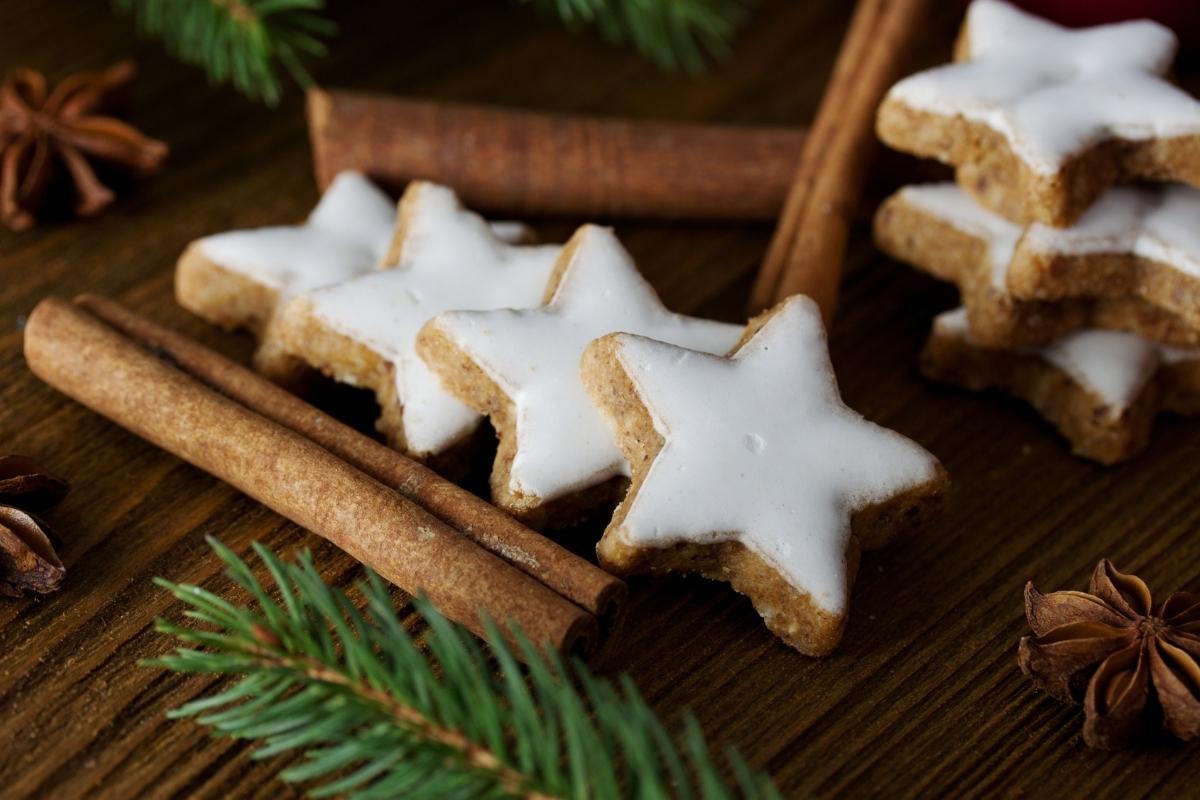
Christmas Cookie Recipes
Looking for more traditional Christmas Cookie Recipes?
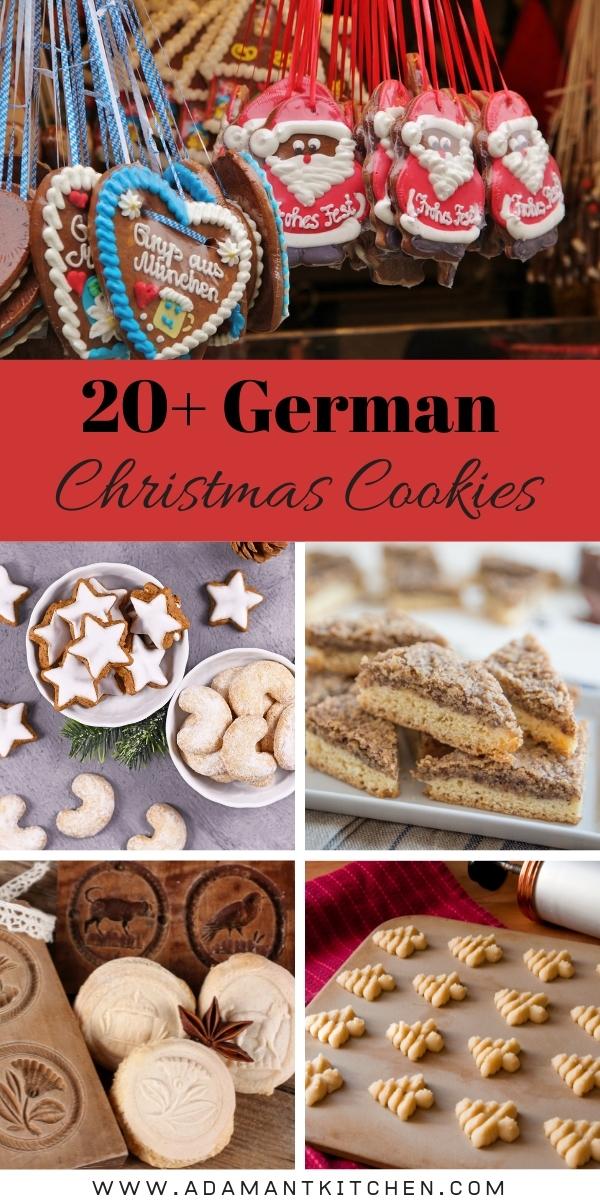
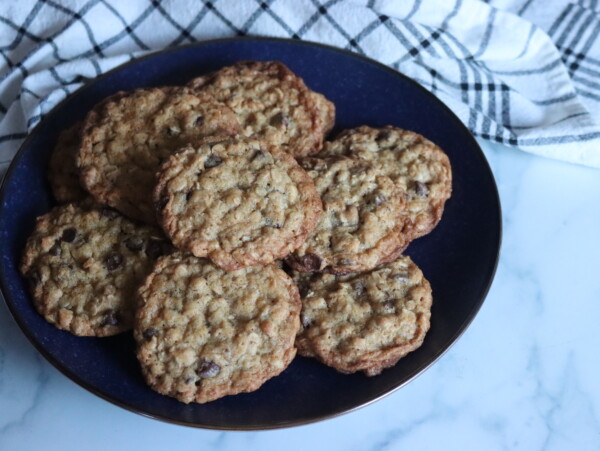
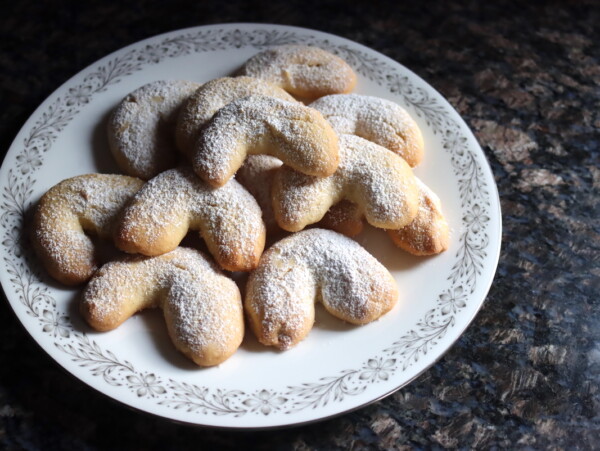
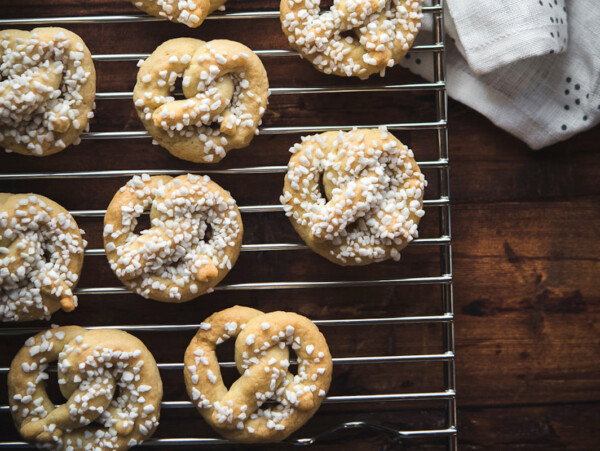
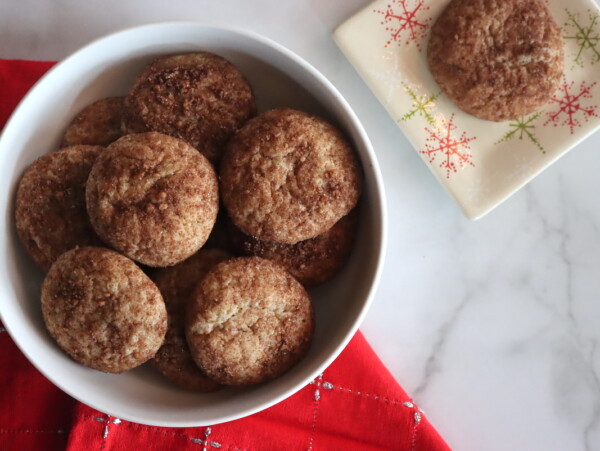
1 Comment